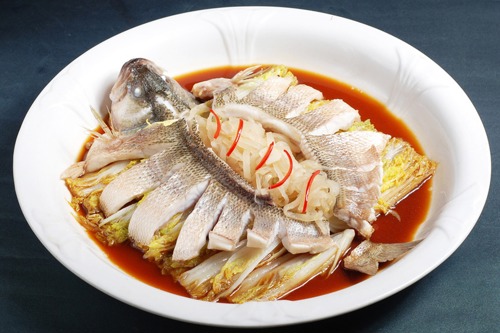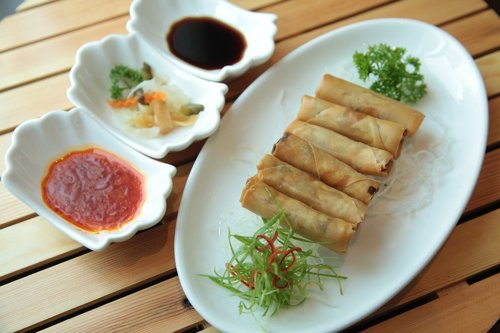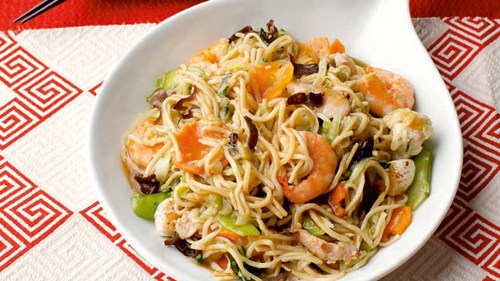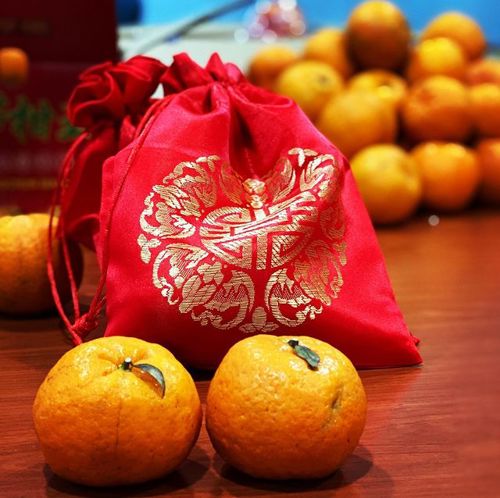8 Chinese New Year Foods That Will Bring You Good Luck
20 Jan 2020
One of the greatest joys of celebrating Chinese New Year is family reunion dinner on the eve of the holiday! In Chinese culture specifically, certain dishes are prepared to bring good luck for the new year. Auspicious meanings are represented by a food’s appearance or pronunciation, which include words for prosperity, success, and family togetherness. After all, who wouldn’t feel a sense of familial warmth while gathering round the dinner sharing a meal together?
If you’re travelling to a country with a significant Chinese population this year, try out any one of these 8 Chinese New Year foods that will bring you good luck:
1. FISH

A whole fish is a staple for the Lunar New Year celebrations, and is intended to welcome prosperity for the entire year. In Mandarin, the word for “surplus” (余, yú) is a homophone of “fish” (鱼, yú). There is also an idiom 年年有余 (níanníanyoǔyú), which means “to have surplus every year,” which gave rise to its homophonic pun, 年年有鱼, or “to have fish every year.”
A popular way to present fish is to steam it Cantonese style - a whole white fish (such as striped bass or flounder) is usually steamed with a mixture of ginger, scallion, soy sauce, sugar, and cilantro. You can also have a whole fish deep fried with a crispy batter in sweet and sour sauce!
2. YEE SANG

Photo by @carol.eats Via Instagram
Yee Sang is particularly popular in Malaysia and Singapore where almost every family and business has a ‘lo hei’ or tossing session during the festivities. Family or business partners will gather round the dish, and use chopsticks to toss the dish while shouting Chinese New Year wishes! It is said that whoever tosses the highest will have the best fortune for the year.
This dish is actually a salad made with julienned vegetables like carrots, radish and jicama. Crackers and sesame seeds are often added, as well as some raw fish (usually salmon). Some people also add mandarin oranges or pomelo to the mix.
3. SPRING ROLLS

Image by Jonathan Valencia from Pixabay
Spring rolls are also a beloved staple of the Chinese New Year. The name 春卷 (chūnjǔn) literally means spring and roll, and refers to the spring season. Originally, spring rolls were intended to combine all of the season’s freshest vegetables together in one dish as a way to celebrate spring. Now, it’s common to eat pan- or deep-fried spring rolls stuffed with pork or shrimp. Because of their resemblance to gold bars, people also eat spring rolls to attract good fortune for the coming year.
4. LONG NOODLES

Photo by Yummy PH Via Youtube
Exceptionally long noodles, called 长寿面 chángshòu miàn, represent a long, long life. Vermicelli or Bee Hoon is a favorite during this time and is usually served fried up with various seafood. It’s customary to slurp down the noodles without chewing so that the strands aren’t severed. Take caution if you’re attempting to do this - because you might accidentally choke on your noodles if you’re not careful!
4. GLUTINOUS RICE CAKE

Photo by @fooddiary.grace Via Instagram
The star of the dessert spread is glutinous rice cake, or nián gāo (年糕), which translates literally as “New Year’s cake.” The word for cake sounds like the word for “tall,” or “to grow,” so eating glutinous rice on Lunar New Year symbolises growth, whether it be in career, income, health, or even height. A popular phrase that accompanies nian gao is 年年高升 (níanníangāoshēng), which means “to increase prosperity every year.”
Nian Gao can be eaten as it is or sliced into rectangular pieces, coated with a flour, water and egg mixture, and deep fried to a crisp as a sweet snack. It’s too bad eating Nian Gao won’t actually make you grow any taller - but it’s a welcomed treat nonetheless!
5. TANG YUAN

Photo by @hungryfever Via Instagram
Tang yuan are special for Lunar New Year celebrations because its name sounds like 团圆 (túanyúan), which means “reunion” or “togetherness.” A popular idiom that accompanies this dish is 团团圆圆 (túantúanyúanyúan), which is a playful way to say “reunion.” In addition to its name, tang yuan’s round shape is very important to Lunar New Year celebrations. In Chinese culture, circles represent unity and oneness, and a warm serving of tang yuan, eaten from a round bowl, is a perfect way to embody that concept.
Tang yuan are essentially sweet glutinous rice balls, often stuffed with sweet fillings such as red bean paste, ground peanuts or black sesame paste. It is typically served in a sweet cane sugar broth boiled with ginger for a kick of flavour!
6. PINEAPPLE TARTS

Photo by @cakebitessgonline Via Instagram
When it comes to fruit, you can’t go wrong with pineapple during Chinese New Year! This is especially evident in the Cantonese and Hokkien translation of the word “pineapple” - “Wong Lai” or “Ong Lai” literally sounds like the coming of prosperity! That is why pineapple tarts have become a staple in every household — that, and they’re pretty addictive!
7. MANDARIN ORANGES/TANGERINES

Photo by @boeykevin Via Instagram
Following the circular concept, certain round fruits are eaten during Lunar New Year to encourage family unity. Oranges and tangerines are especially popular because their golden color is believed to attract wealth. The word for orange 橙 (chéng) is a homophone for “success” (成 chéng) while another word for orange is 橘子 (júzi), which sounds similar to the word for good luck (吉 jí).
Aside from bringing you luck, mandarin oranges are also chock full of Vitamin C and antioxidants, and are therefore beneficial to your health! So eat more oranges during this Chinese New Year and you’ll be able to gain both wealth AND health.
And there you have it - 8 Chinese New Year foods that will bring you good luck in the new year! Going anywhere for the Chinese New Year? Book your next flight on Mayflower.com.my now. AND don’t forget to follow our Mayflower Facebook Page for more!

